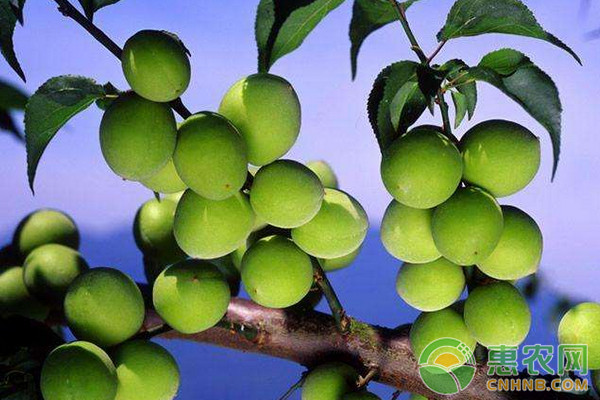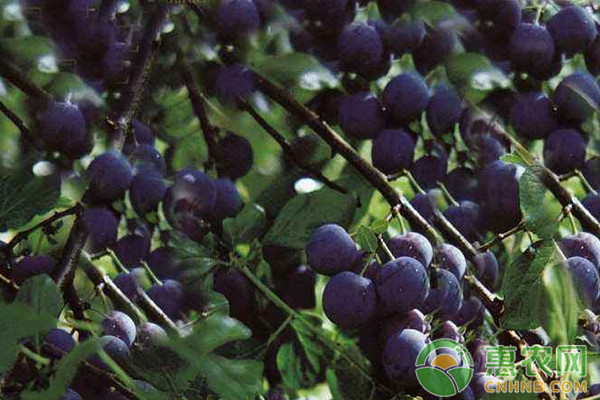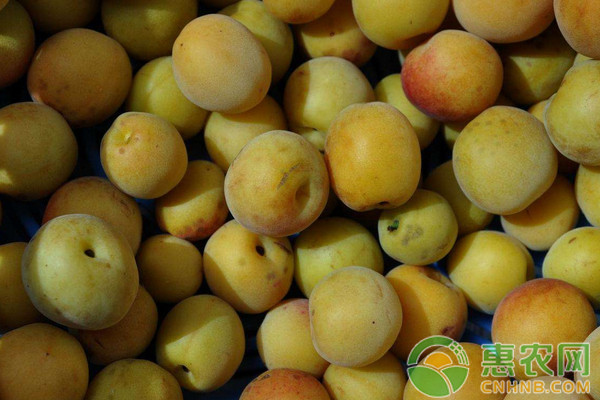Cultivation Characteristics and Pest Control of Tacheng Plum
A long time ago, there were wild plum blossoms growing in Xinjiang, and the sour plum varieties that were planted in the Mediterranean were imported from Xinjiang. Let's talk about the pruning and pest control of Tacheng plum.

1 Analysis of cultivation characteristics of Tacheng plum
The acid plums in the Xinjiang City area are unique, because the Tacheng area belongs to the Central Asian alpine arid climate zone. The annual average temperature is 6 °C, the lowest temperature is -39 °C, the highest temperature is about 41 °C, and the frost-free period is 146 days. The sour plum that can survive in the Tacheng area is highly resistant to naturalness, strong in production and dissemination, and capable of adapting to the hydrological environment. The plum varieties in Tacheng area are of good quality and good quality, and the high-quality sour plum is popular among local people. Because the Tacheng area is rich in sour plums, there is a richer plum culture in the area. The people in the Tacheng area like to eat sour plums and make the plums into various kinds of sour plum products. They give the plums as gifts to relatives and friends in the distant place, or sell them as other special products to other provinces and cities. In the middle, with the spread of the plum culture in the Tacheng area, the plum will be loved by the international and domestic people.
2 Pruning and pest control of Tacheng plum
2.1 Reproduction
The quality of Tacheng plum is generally high, and the key link of Tacheng plum varieties is to optimize the breeding. Generally, the Tacheng sour plum can be propagated in three ways: the grafting method allows the Tacheng sour plum to survive, and the Shanke and Siberian apricots can be selected as rootstocks to make the tower plum blossoms. This breeding method has high emergence rate and easy survival. Breeding speed is fast, and it usually takes two years to enter the result period. In the way of root propagation, the root seedlings of Tacheng plum tree can be selected for breeding. This method of propagation takes a long time, the growing season is inconsistent, and sometimes the plant lodging occurs. The method of breeding towers refers to the collection of seeds of wild plum, and they are cultured in tissue fluid. This method of reproduction has a large workload, low degree of differentiation, and technical difficulty.

2.2 Colonization
If you want to improve the quality of the plum, you need to let the plums absorb more nutrients, and you can fully obtain the sun and rain. For this reason, planning the planting land and controlling the planting density are the main points of the planting process. Generally speaking, if the tree shape is short, the soil fertility is poor, and the climatic conditions are poor, the acid plum can be densely planted; otherwise, the plant spacing can be appropriately increased. Generally, the plant spacing can be controlled between 60 and 100 plants per seedling.
2.3 Trimming
There are three purposes for pruning plum trees. (1) Let the plum tree be able to fully obtain the sun and rain. If the leaves are too dense, the plum tree will not be fully exposed to the sun, resulting in poor photosynthesis; (2) too dense branches will make the plum When the tree grows, it consumes too much nutrients, which affects the quality of the fruit of the plum tree; (3) If the plastic trimming work can be properly done, the plum tree can be revived in batches to improve the reproductive effect of the plum tree. The principle of pruning plum tree is as follows: pruning the plum tree into a heart shape, controlling the tree height below 60 cm, leaving the trunk of 3 to 5 branches on the trunk, and controlling the distance between the trunks above 30 cm. Stay strong and weak, go to the old and stay new ways to do tree-shaped pruning work. After the pruning is completed, the root seedlings need to be removed to maintain the uniformity of the growth of the plum tree.
2.4 Prevention of early disease prevention
The pests and diseases that affect the growth and reproduction of the plum tree in Tacheng are mainly gum disease, heartworm, cherry and elephant pests. When planting the plum tree, it is necessary to provide sufficient water and fertilizer for the plum tree to strengthen the disease resistance of the plum tree. In the winter, we must do a good job of winter shearing, cut off the diseased branches immediately, and burn the diseased branches. In the spring and future, the diseased department of the tree is dug, and the sulphur plum is applied to the plum tree. Sprinkle 50% of Dorothy WP 800 times solution for sour plum tree, and spray 5% cyhalothrin milk 1000 times solution for sour plum tree. Before the winter, you can do the work of the rat bait, and do a good job in rodent control.

3 Analysis of the Types and Values ​​of the Acid Resources of Tacheng
At present, there are more than 30 varieties of plum varieties that have been used in planting and production in Tacheng. These three varieties have different characteristics and different sales markets. The first one is small fruit sourness, which is the most variety of Tacheng sour plum varieties. At present, 90% of Tacheng plum is a small fruit sour type. This variety is characterized by a plant height of more than 3 meters, less than 4 meters, a large trunk coverage, leaves are light green or dark green, leaves are sharp, with thick or dense hairs, petiole length of 1.4 meters to 1.6 Meter. Its fruit weighs 5-15 grams, the fruit shape is round, the peel is blue-purple, the flesh is yellow-green, the organic acid content of the fruit is 1.5%-2.0%, the soluble matter is about 15%, and the drupe ratio is 3.0%-9.0. %. This kind of plum is very resistant to pests and diseases. This fruit is suitable for pickled foods and can be used to make candied fruit, sparkling wine, etc. The second type is the sour taste of the big fruit. This kind of sour plum is less in variety and is rarely grown in batches. This variety is characterized by a plant height of 4 meters or more and less than 5 meters. The trunk coverage is extremely large, the leaves are egg-shaped or round, the leaves are thick, and the leaves are densely velvet. Its fruit weighs 22-25 grams, the fruit shape is round or slightly elliptical, the skin is blue-purple, the fruit skin is pink, the pulp is yellow-green, the organic acid content of the fruit is 1.5%-2.4%, and the soluble matter is 17 About 100%, the ratio of stone to fruit is 5.8% to 6.2%. This fruit tree has both ornamental value and economic value. The third type is the sweetness of large fruit. This variety is characterized by a plant height of about 4 meters, less than 4.5 meters, and the trunk coverage is extremely large. The leaves are obovate or elliptical, and the leaves are thin and large. Sawtooth. Its fruit weighs 22 to 32 grams, and its shape is pear-shaped, round, and oblong. The skin is blue-violet, line-colored, yellow, green-yellow, and has a sweet and sour taste. The organic acid content of the fruit is 1.5% to 1.3%. The soluble matter is about 20%.
This kind of fruit is suitable for fresh and fruity glutinous rice. At present, the plant community considers it to be a hybrid of wild plum and plum. If you want to improve the economic benefits of fruit farmers, it is necessary to cultivate sour plums in response to market demand.
China Cosmetic Anti-oxidation Raw material cheap price high quality plant extract, Ginkgo Biloba leaf Extract Powder can directly eliminate lipid free radicals, lipid peroxidation free radicals and alkyl radicals, and terminate the free radical chain reaction chain.Astaxanthin Haematococcus Pluvialis can significantly reduce the ROS and NMP on the dermal layer of collagen, elastin damage, to ensure the normal metabolism of the skin
Anti-Oxidant Cosmetic Plant Extract,Cosmetic Anti-Oxidant Ingredient,Cosmetic Anti-Oxidant Extract Powder,Cosmetic Anti-Oxidant
Xi'an Natural Field Bio-Technique Co., Ltd. , https://www.naturalnf.com